
Pacific Cup Race Update
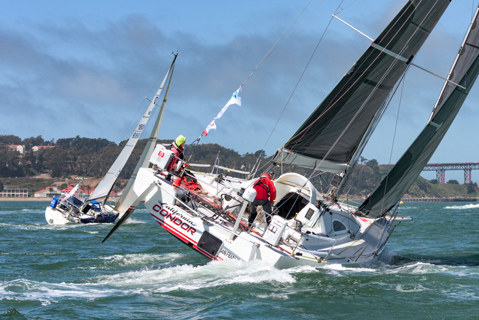
After Monday and Tuesday’s starts, the bulk of the fleet — 50 boats — are now underway in this 19th edition of the Pacific Cup, the epic 2,070-mile race from San Francisco to Kaneohe, Oahu. With both starts taking place in nearly perfect conditions according to both spectators and sailors alike, all starters were flushed out the Gate quickly by moderate breeze and an ebb current. Once outside the Gate, the fleet was aided by reliable pressure that allowed competitors to make their way out of the Gulf of the Farallones, with its often-fickle evening winds, and west toward the islands. The fleet is now making steady progress toward Oahu in what is shaping up to be a quick race. Early concerns about a series of tropical storms and hurricanes are beginning to dissipate as these systems lost strength more quickly than predicted, although the fleet and race committee are still closely monitoring the situation.
The West Coast classics in Monday’s start are thus far at the top of the rankings, with Cal 40s currently first and third in fleet overall and a Moore 24 in second, although the solid pressure offered in the second start has allowed a pair of Tuesday starters to quickly move into the top five positions. With both starts taking place in ideal conditions and getting the fleet offshore quickly, competitors from both starting days still have everything to play for as neither start benefited from significantly better conditions than the other.
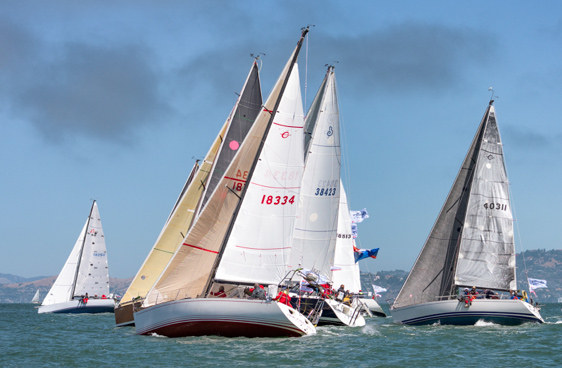
Walter Smith’s Richmond-based Cal 40 Redhead, with renowned sailor Robin Jeffers aboard, has moved into a commanding lead in division A and also leads overall. Steve Calhoun’s Cal 40 sistership Psyche appears to be the only boat that has been forced to turn back thus far. She is headed to Monterey Bay. Mark English’s Moore 24 Mas! led the fleet overall for much of yesterday, though she has slipped to second overall. Mas! still leads the DH 1 division, but is in a close battle with Rowena Carlson’s Cal 40 Nozomi.
Tuesday’s top starters look to be Shawn Ivie’s Express 37 Limitless and Dean Treadway’s classic Farr 36 Sweet Okole. The two boats have quickly moved up the leaderboard to 4th and 5th overall, with fellow Express 37 Elan close behind in sixth overall. Leading the Latitude 38 cruiser’s division and currently the closest boat to Hawaii is Rick Niello’s Jeanneau 57 Ticket II.
The quickest boat in the fleet at the moment is — not surprisingly — Hill Blackett’s custom Jim Antrim-designed Class 40 California Condor, which is currently smoking down the track at close to 10 knots of boat speed. However, she is correcting out behind Charles Devanneaux’s Beneteau First 30E Sailing for ALS, which leads the DH 2 division.
The nine-boat ORR D division is the sole division to start on Thursday, while the Maxis will start on Friday. Both starts look to also benefit from quick conditions.
Solo TransPac Update
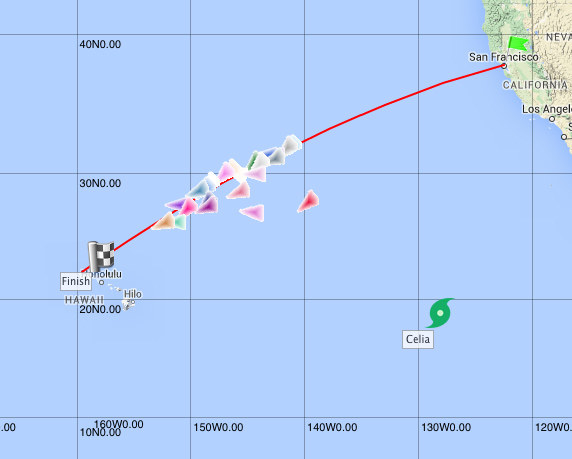
Jirí Šenkyrík’s Olson 30 Kato has been leading the 2,120-mile Singlehanded TransPac Race on and off since the July 2 start. He’s also often been in the lead of this Tiburon, CA, to Hanalei, HI, race on corrected time, which is no great surprise to some. He is, after all, sailing a boat that was designed in the late ’70s for the very purpose of sailing downwind to Hawaii faster than the competition. Kato‘s chief competition has been the 21st century-designed J/88 Ventus, owned by Chris Cartwright, which is just a bit more than 50 miles behind Kato as we post this. Both boats have been sailing south of the rhumbline, and one or both should arrive in Hanalei before Friday’s ‘Lectronic Latitude posting — Kato is less than 350 miles from the finish line.
The following reports from the 23-boat fleet give insights into the challenges of soloing to Hawaii in racing mode: George Lythcott on the Alameda-based Express 27 Taz!! has been having trouble with battery charging. The overcast skies have been blocking out the sunshine that Taz!!‘s solar panels crave. On Tuesday, Lythcott sailed through 3 or 4 squalls, described as "full-out rain" in the afternoon. "Everything is soaking wet including me. I am soaked to the inside of my boots and bones — no dry spot on my body. My body heat is steaming up the inside cabin." Lythcott says he’s hydrating well, eating well and sleeping well. He tore his twin headsails twice. On Tuesday evening he was sailing with the #3 jib poled out, with two reefs in the main, in 20-25 knots of breeze. "Sky and sea angry most of this race," he noted. "This passage has been a handful."
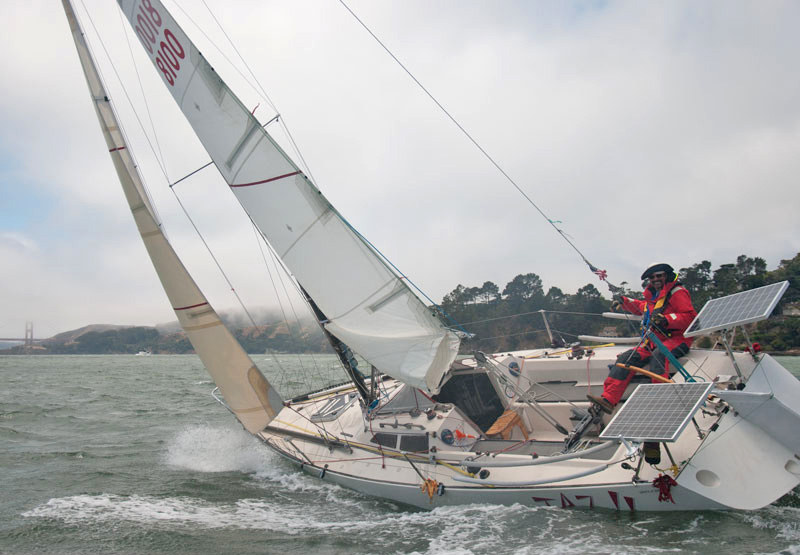
©2016Latitude 38 Media, LLC
David Nabors of the Olson 34 Temerity described nasty, steep mixed seas, which sorted themselves out yesterday afternoon into longer, lower swells. The wind was still above 20 knots, so he didn’t set a spinnaker. He had managed to get eight hours of sleep, however, "Thanks to finding the ‘good’ earplugs which had been mislaid."
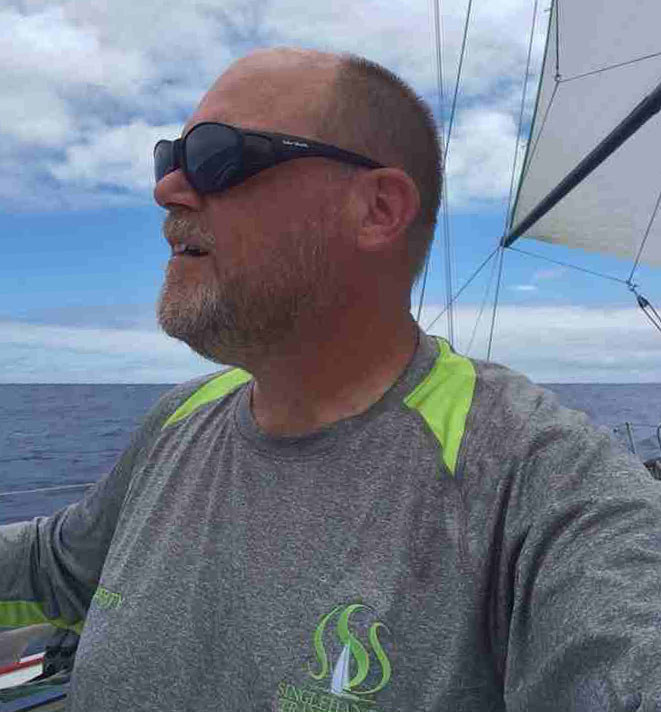
During the crossing, fleet members have been keeping a close watch on Tropical Storm Celia, which is far to the southeast of the fleet. It is now moving toward the northwest and expected to weaken, but is causing building sea swells of 11 to 14 feet. The Weather Routing, Inc., recommendation is for the slower, easternmost boats to stay well to the north. The NNE trades are forecast to strengthen today, with winds of 12 to 23 knots depending on the position of various fleet members. See this site for more detailed weather info, and the event site for updates and fleet info.
Skipper Found Dead aboard Grounded Sloop
Yesterday, the South Pacific cruising community was stunned to learn that one of its own, singlehander Louis Schooler, 64, had been found dead aboard the San Diego-based Hylas 42 Entertainer, which had grounded on Takapoto Atoll in French Polynesia’s Tuamotu archipelago. Lying roughly 300 miles northeast of Tahiti, the 6-mile-long atoll is normally one of the first to be passed by cruisers en route from the Marquesas to the Tuamotus or Society Islands.
According to contacts in Tahiti, an investigation into Schooler’s death is ongoing, and details about the incident are still sketchy. It is known, however, that a search was instituted by MRCC Papeete (Maritime Rescue Coordination Center), after Schooler’s wife became concerned because Louis had not checked in for five days. The solo sailor had recently completed the 3,500-mile crossing from San Diego to the Marquesas.
An autopsy has been or is being performed on the deceased sailor, which should shed light on the question of whether he died prior to Entertainer‘s grounding on the reef.
Despite the inherent dangers in crossing thousands of miles of open water, we can recall only one other fatality during the 20 years that we have been reporting extensively on the annual westward migration of cruisers that we call the Pacific Puddle Jump. That sad case also involved a singlehander who apparently fell overboard during a short crossing between Marquesan islands. This year’s fleet suffered a previous loss: As reported here, in early May the Alaska-based Amel 46 ketch Morning Dove grounded on a Tuamotu reef while in transit between Apataki atoll and Rangiroa. Thankfully, all aboard escaped without injury.
